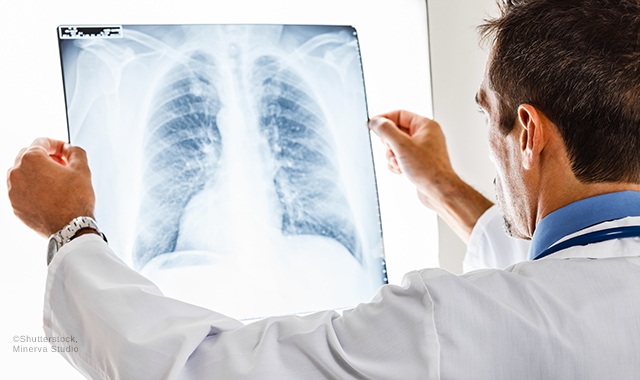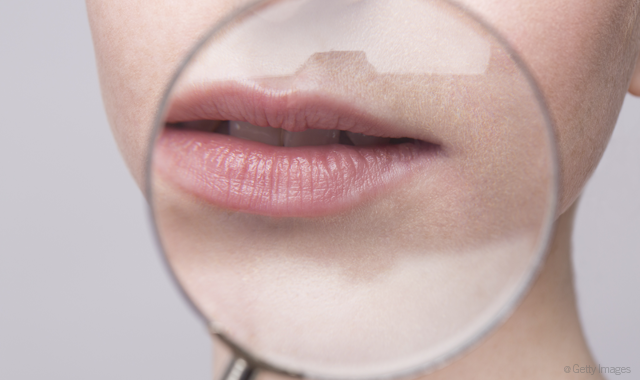The 3 common infections dental professionals should be worried about
Infections can spread within a matter of seconds. Follow these steps to protect yourself when treating patients.
Bad things can happen at the dental practice if proper infection control protocols aren’t followed. And while some infections are more serious than others (for instance, OSHA says the big three bloodborne pathogens are Hepatitis C, Hepatitis B and HIV), using caution and following the right procedures can help prevent the spread of many infections.

Trending article: The dental prescriptions that are killing your patients
Our industry experts shared the three most common infections in the dental office and what dental team members can do to protect their overall health.
Click through the slides to find out what you need to know.


Respiratory
One of the most virulent types of infection is so common simply because of its omnipresence - respiratory infections. Viruses, like the cold or flu, can be picked up anywhere, so they’re certainly not unique to the dental practice. However, care must be taken to prevent their spread, especially during flu season.
Sometimes avoiding the spread of respiratory infections can seem like an Infection Control 101 course.
More from the author: 5 things you NEED to know about personal protective equipment
“Without a doubt, many procedures within the dental field generate aerosols,” says Karen Daw of Karen Daw Consulting and former clinic health and safety director for The Ohio State University College of Dentistry. “Being proactive, rather than reactive, can prevent respiratory infections. In addition to posting signs on the door asking patients to reschedule if they are not feeling well, there’s an opportunity to catch them even sooner. I recommend reminders when the appointment confirmation calls go out. What if instead of just saying ‘We’re calling to remind you of your dental appointment on Tuesday at 9 a.m.,’ the message also included, ‘As a reminder, we are now entering peak cold and flu season. To protect your health, as well as the health and well-being of our patients and team, we kindly ask that you call to reschedule if you are experiencing cold or flu-like symptoms. One of our scheduling coordinators will be happy to find an alternate date and time to best accommodate you.’”
Many resources are available to dental teams, such as the Centers for Disease Control and Prevention’s Summary of Infection Prevention Practices in Dental Settings document.
“So in addition to being smart about practicing standard precautions, wearing your PPE, washing your hands, wearing your mask, things like that, the CDC also has really focused guidelines,” says Joyce Moore, RDH, an infection control consultant and a clinical instructor at Bristol Community College in Fall River, Massachusetts.
“And what they’re starting with is when the patient actually walks in the door, or if a person is with them, if anybody has signs or symptoms of a respiratory infection, beginning at the point that they actually walk into the practice, there are things that we can do. It could be posting signs at the entrance with instructions that if you’ve got a respiratory infection to cover your mouth, to use and dispose of tissues, to perform hand hygiene, offering masks to coughing patients. And then in addition to making sure we provide products for hand hygiene, tissues that you can put in a receptacle that you don’t have to touch, we can try to give them a separate area while they’re waiting for care or while they’re waiting for the person that is having care.”
Stopping patients from coming in is, certainly, the best step. However, not all patients are receptive to that message.
“I’ve had parents drag their sick child into an appointment, even if the kid was dismissed from school for not feeling well,” Daw says. “A child with a huge snot bubble was brought in by mom because she had already taken time off from work for her son’s dental appointment. If this is the case, having masks and hand sanitizer at the front desk would be helpful. … It’s become commonplace to offer these to individuals with respiratory infections. Once offered to the patient, advise them to leave the mask on until seated in the back. This gives the team member time to don their own mask before being potentially exposed.”



MRSA
Something with a name like Methicillin-resistant Staphylococcus aureus sounds pretty serious. And, to be fair, MRSA can be very serious - but it’s also very common.
MRSA is a common type of staph, but it can cause infections in different parts of the body, Moore explains. The issue, she says, is that it’s become a super bug since it doesn’t respond well to antibiotics.
“Most MRSA infections are minor. Some of them can get to be life-threatening,” Moore says. “For instance, my niece came home and she had a red spot on her leg and it looked like a red bump. It wasn’t quite to the stage where it was a pimple or boil yet, but it just didn’t look right. The area was tender and warm and, as it turned out, it was. They can also often be confused for a spider bite and could present as an abscess or cellulitis. It can be invasive and it can be complex.”
While MRSA typically spreads by touching infected skin, Daw says that it can also be contracted by touching items or surfaces that have come in direct contact with an infection.
Trending article: Should you go to work if you're sick?
“I don’t think people give much thought to MRSA transmission via personal protective clothing, like scrub jackets and white coats,” she says. “This is why I cringe when I hear an office allows employees to launder these items at home. It’s prohibited by OSHA under the Bloodborne Pathogens Standard, but it also protects the employee from MRSA. Even if laundering in the practice, PPE must be worn while handling contaminated laundry.”
Daw notes that the CDC offers some guidelines on washing items one suspects may have come in contact with MRSA.
“This includes washing in the warmest temperature indicated on the garment label and using detergent. They do not indicate bleach or laundering separately as a requirement. As a recommendation, allow enough space for laundry to agitate freely and dry clothing completely in a dryer,” she says.
Avoiding MRSA is often an exercise in avoiding contact with infected surfaces.
“Make sure that we’re using an EPA-approved, hospital-grade disinfectant,” Moore says. “And we need to be cleaning and disinfecting, so we know that we’re using that product correctly and getting rid that of bacteria. Use barrier protection where we can because the areas that we typically use those on are typically difficult to clean and disinfect. Use single-use disposables whenever we can. Of course, hand hygiene before and after every patient.
Always using personal protective equipment properly, so we’re wearing it properly, we’re removing it properly and we’re disposing of it properly.”
Hands-free products are also great, Moore says, such as overhead lights that turn on with the wave of a hand rather than touching a switch.



Herpes
Dental healthcare professionals spend a lot of time working in patients’ mouths, and that’s the site of the next, most common source of infection - herpes.
The herpes simplex virus is very transmittable, and it will typically present itself as a cold sore on a patient.
“The problem is that we don’t want to turn the patients away, we have them in our schedule, but it’s very, very contagious,” Moore says. “So if there’s any contact with that herpes simplex virus for another person who has not been infected, it passes through the skin or the mucous membranes pretty easily. It’s the type of virus that is unpredictable. Usually people see it when they’re really stressed, so the carrier will crop up with a lesion, usually on the lip. However, most of the time those people don’t realize at what point they’re actually shedding the virus, which is infective."
Related reading: Why dental hygienists should not treat patients with active herpetic lesinos
And if any oral fluids happen to splash into dental professionals’ eyes, they could end up with an eye infection. In addition, if a staff member practices poor hand hygiene or a glove develops a small cut, then the herpes virus can get on the individual’s hand and cause a “herpetic whitlow,” or a lesion on the finger.
Because the infection is so prevalent in the oral cavity, its presence and prevention should be well known among dental professionals. Fortunately, there are plenty of articles and resources available that spread information on herpes.
But what should a dental professional do if a patient, unaware of the risk the herpes virus poses, does keep his or her appointment?
“I advise offices to rehearse spiels to scenarios like this,” Daw says. “In fact, it’s one of the most commonly requested events the team wants to act out during training. The key is to put the patient at ease and not make them feel embarrassed or ashamed for having kept their appointment. In a perfect world, we all pray there are no broken appointments.
“So, what to say? If possible, have the discussion outside of earshot of other patients,” she continues. “That might include taking them into the back as if they were being checked in before having the discussion. Then, explain why it is best for them to wait until the sore has healed over. Mention that elective dental treatment with an open sore will only exacerbate the lesion by causing it to split further or bleed. And that dental treatment can cause the sore to take longer to heal. Therefore, as an office policy, the appointment will be rescheduled.”
Prevention for a lot of potential infections, it seems, involves turning patients away, or at least helping them to minimize their exposure. However, isolation is a two-way street. Clinical personnel should be encouraged - and not penalized - to just stay home if they’re sick.
“Employees who work there and are sick should have work exclusion policies that don’t penalize them with loss of wages or benefits or job status,” Moore says. “Because really, in addition to having patients who shouldn’t be in the practice, we need to be cognizant of employees coming into work sick, and sometimes the employees should be sent home as well.”
The most common infections at the dental practice are also the easiest to avoid. Being mindful of infection control basics - in addition to avoiding the infection in the first place - is a great first step to take to stay out of trouble.
